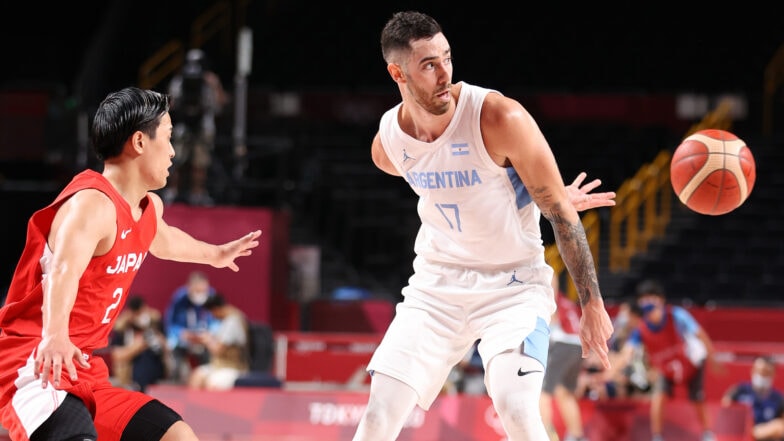Home »
Misc »
How does basketball work in the olympics
How does basketball work in the olympics
History, top teams and all you need to know
Having introduced the sport to the world, it’s no surprise that the USA has produced some of the finest moments in Olympic basketball history, including the Dream Team.
Basketball was invented in the United States of America in 1891. But it didn’t take too long for the sport to become popular. Today, it’s one of the most-watched sports in the world.
Its rise can be traced back to its roots in a gym class in Springfield, Massachusetts, making its way into high school and colleges before evolving into a professional sport it is today. Eventually, it made its way to the sport’s grandest events.
When did basketball start in the Olympics?
Basketball was introduced in the Olympic programme at the 1904 Games in St Louis as a demonstration event. Basketball was first contested as a medal event at the 1936 Olympics. Women’s basketball, meanwhile, made its debut at the Montreal 1976 Games.![]()
3x3 basketball made its Olympic debut at Tokyo 2020.
Who qualifies for Olympic basketball?
A total of 12 teams, each in the men’s and the women’s competition, qualify for the basketball event at the Olympic Games.
While seven teams can gain entry through the FIBA World Cup, four slots are determined through the FIBA Olympic qualifying tournament. The last remaining slot is reserved for the hosts.
Which country has won the most Olympic gold medals in basketball?
The United States of America is the most successful team in the history of Olympics basketball.
The USA Olympic men’s basketball team has won the gold medal a record 16 times, which includes an unbeaten streak from 1936 to 1968.
The USA women’s basketball team, meanwhile, has pocketed the gold medal on nine occasions. This includes an unbeaten run that’s still in place and dates back to Atlanta 1996.
USA dominates Olympic basketball
Having invented the sport in the late 1800s, it was no surprise that the USA dominated basketball once it was included as a medal event at the 1936 Olympics.
With the Young Men’s Christian Association (YMCA) playing a key role in spreading the sport to various nations, as many as 21 teams competed for the top honours at the Berlin 1936 Games.
But none could stand in the USA’s way as they romped home to emphatic wins in each of their matches to take home the gold.
The coming years saw the Americans grow stronger as they retained the Olympic title in commanding fashion. With no losses throughout their campaigns, their wins in the gold medal matches were most startling.
The USA basketball team beat France 65-21 in the final of the 1948 Games. The Soviet Union, meanwhile, lost to the Americans in the following four editions -- 1952, 1956, 1960 and 1964 -- with the champions recording dominating wins to retain their crown.
This period also saw the rise of the Soviet Union as a force in the international basketball scene.
The Soviets had made their presence felt at the continental stage by winning the biennial European Basketball Championships 10 times from 1951 to 1971 and the FIBA World Championships in 1972.
And when the 1972 Munich Olympics came around, their sole focus was to capture the only title missing from their cabinet -- an Olympic gold in basketball.
USA gets a shock at Munich Olympics
Coming into the Munich Olympics, the Americans were once again favourites to retain their title. But a look at their build-up suggested otherwise.
They had lost out to the Soviets in the final of the 1970 World University Games and bowed out of the 1971 Pan American Games without a medal.
What really hurt them in this phase was the lack of international experience in the squad. With the Olympic competition being restricted to amateurs, the best hoopsters in America were kept out of the Olympic team -- as they turned pro by joining the NBA -- while the top collegiate talent made up the squad.
Though this worked for the USA in the previous editions, this time the Soviets had found a way to exploit the American limitation by listing their players as soldiers or workers, which allowed them to breach the amateur rules.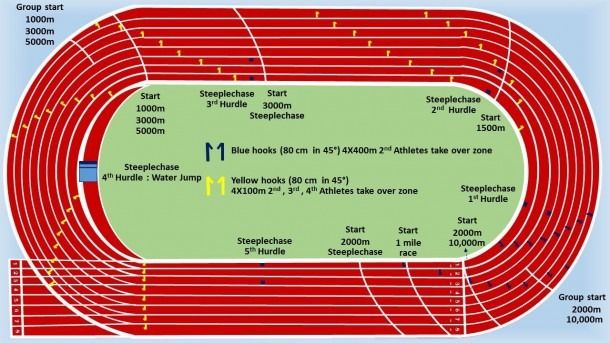
This meant while the USA had high school sophomore Doug Collins and the North Carolina State University rookie Tommy Burleson as their best players, the Soviets rode on the brilliance of experienced stars Sergei Belov, Modestas Paulauskas and Alexander Belov.
However, it wasn’t until the gold medal game that the lack of experience came to haunt the USA.
Having come into the gold medal match without losing a game, the final was expected to be a close contest. But the Soviets had a different plan.
The USA lost to the Soviet Union in the final of the 1972 Olympics in Munich. (Getty Images)
The Soviet Union basketball team controlled the proceedings with smart ball play, often using the length of the court to stretch the American defence to score points at will. The Soviets scored first and led by the healthy margin of 26-21 at the half.
“We particularly struggled against the Russians because they were adept at controlling the tempo,” Mike Bantom, a member of the ’72 team, now senior vice president for NBA player development, told the New York Times.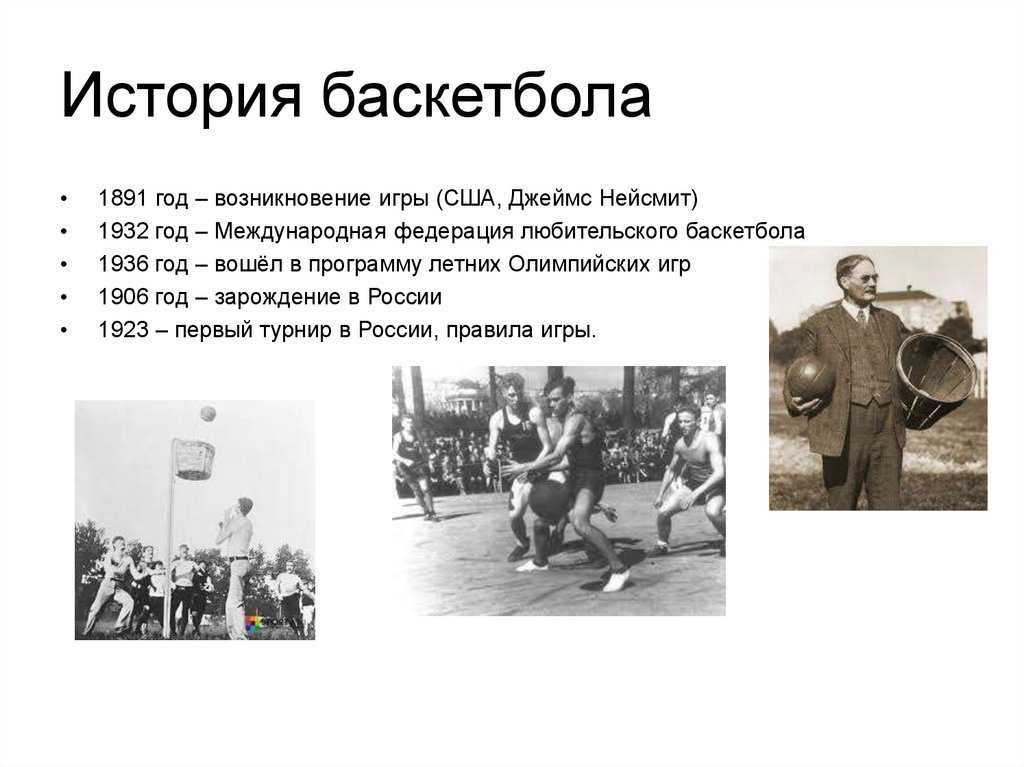
While the Americans mounted a comeback in the second period it wasn’t until the final six minutes that they had their opponents in trouble.
Trailing by eight points, the Americans put pressure and saw the Soviets stumble, helping them reduce the gap to just a point with six seconds left on the clock.
Down to the wire for the gold medal, Doug Collins - the pillar of his team - was not done yet as he made a fine open-court steal and drove towards the paint before being knocked down.
The foul meant the Americans were awarded two free throws to seal the match. While Collins sank them both to put his side ahead, the Soviets called for a time-out.
The game resumed with a second left, and when that went by, the United States players started celebrating. But the drama was not over yet.
Moments later, the FIBA president was seen on court asking for a redo of the final three seconds due to a refereeing error.
This time though, the Soviets ensured that they made the most of the opportunity as Alexander Belov pulled out a buzzer-beater to subject the USA to their first loss at the Olympic stage.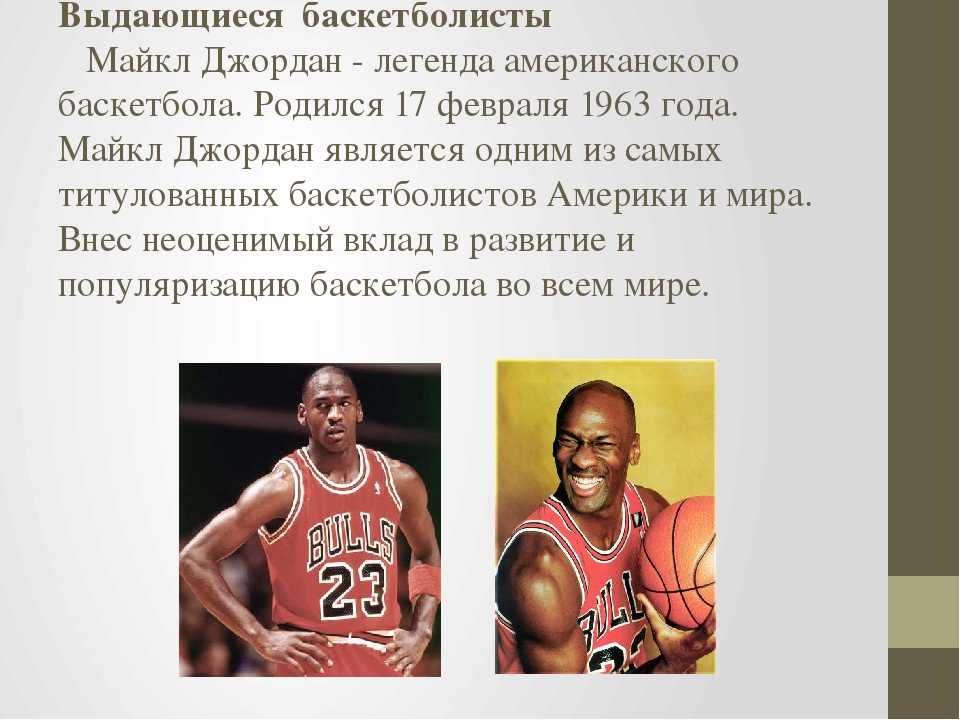
Though the Americans appealed against the final decision, it was turned down as the Soviet Union won their maiden basketball Olympic crown.
The Dream Team
The coming years also saw a number of countries making the most of the loopholes in the amateur player rule to field top talents at the Olympics.
However, this changed in 1992 after FIBA ruled to include professionals for the Barcelona Olympics.
This allowed the USA to select what was later dubbed as the greatest sports team ever assembled.
The team featured the likes of NBA superstars Michael Jordan, Larry Bird, Magic Johnson, Patrick Ewing, Scottie Pippen and Karl Malone among others.
The Dream Team, coached by Chuck Daly, a two-time NBA champion, had a pre-competition camp in Monaco and then moved into a luxury hotel in Barcelona, where they stayed during the Games.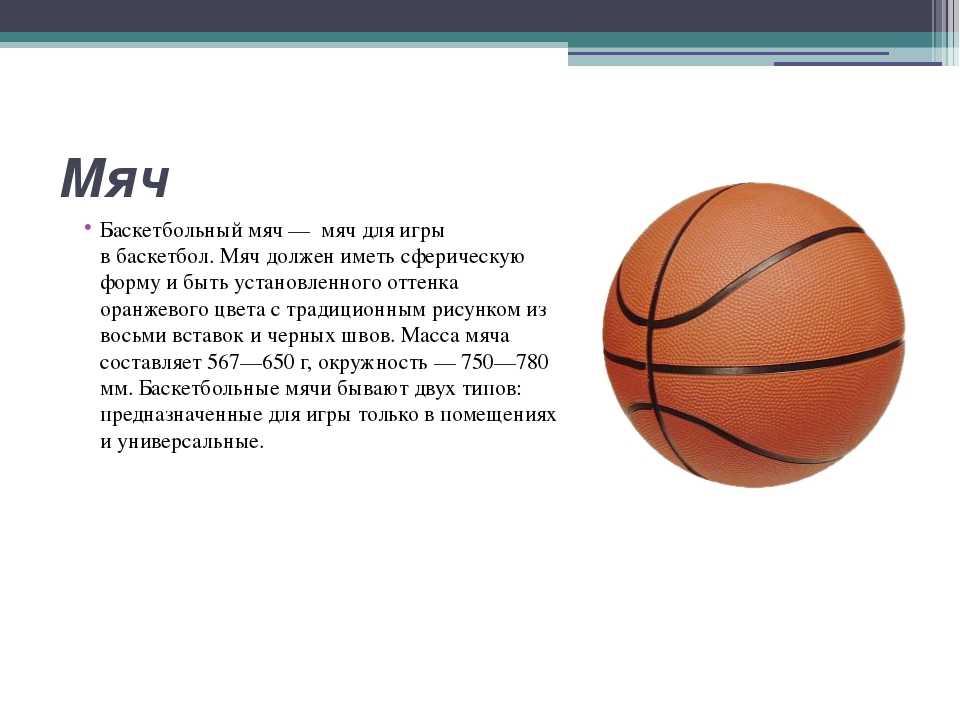
The Dream Team dominated the Olympic competition, sailing through to win the gold medal. They were the first team to score 100 points in every match at the Games, something that led to their head coach commenting: “It was like Elvis and the Beatles put together.”
However, it’s the legacy that the team left behind that had a lasting impact on the popularity that basketball enjoys today.
Following Barcelona 1992, foreign recruits have been a major draw in the NBA with Yao Ming and Andrea Bargnani being the number one draft picks in (2002) and (2006) respectively. Meanwhile, Dirk Nowitzki and Giannis Antetokounmpo have won the NBA MVP award since.
Olympic basketball winners: Men's
Men's Olympic basketball: All medallists| Olympics | Gold medal | Silver medal | Bronze medal |
|---|
| Berlin 1936 | USA | Canada | Mexico |
| London 1948 | USA | France | Brazil |
| Helsinki 1952 | USA | Soviet Union | Uruguay |
| Melbourne 1956 | USA | Soviet Union | Uruguay |
| Rome 1960 | USA | Soviet Union | Brazil |
| Tokyo 1964 | USA | Soviet Union | Brazil |
| Mexico 1968 | USA | Yugoslavia | Soviet Union |
| Munich 1972 | Soviet Union | USA | Cuba |
| Montreal 1976 | USA | Yugoslavia | Soviet Union |
| Moscow 1980 | Yugoslavia | Italy | Soviet Union |
| Los Angeles 1984 | USA | Spain | Yugoslavia |
| Seoul 1988 | Soviet Union | Yugoslavia | USA |
| Barcelona 1992 | USA | Croatia | Lithuania |
| Atlanta 1996 | USA | Yugoslavia | Lithuania |
| Sydney 2000 | USA | France | Lithuania |
| Athens 2004 | Argentina | Italy | USA |
| Beijing 2008 | USA | Spain | Argentina |
| London 2012 | USA | Spain | Russia |
| Rio 2016 | USA | Serbia | Spain |
| Tokyo 2020 | USA | France | Australia |
Women’s basketball at the Olympics
While the men’s game has enjoyed a storied history under the Olympic banner, women’s basketball has a similarly rich vein of tales to tap into.
The USA is the most successful team in women's Olympic basketball with eight titles.
Making its debut at the 1976 Games in Montreal, women’s basketball has been a constant presence at the Olympics ever since.
The Soviet Union was the first to claim the Olympic title in the women’s category by beating the United States in the final at the 1976 Games. While the Soviets retained their crown at their home Games in 1980, the Americans took the gold medals in the following two Games.
In 1992, a Unified Team consisting of the former Soviet Republics beat China for the title.
The Americans, however, returned to regain their crown at Atlanta 1996 and have won the title at every edition since.
Olympic basketball winners: Women's
Women's Olympic basketball: All medallists| Olympics | Gold medal | Silver medal | Bronze medal |
|---|
| Montreal 1976 | Soviet Union | USA | Bulgaria |
| Moscow 1980 | Soviet Union | Bulgaria | Yugoslavia |
| Los Angeles 1984 | USA | South Korea | China |
| Seoul 1988 | USA | Yugoslavia | Soviet Union |
| Barcelona 1992 | Unified Team | China | USA |
| Atlanta 1996 | USA | Brazil | Australia |
| Sydney 2000 | USA | Australia | Brazil |
| Athens 2004 | USA | Australia | Russia |
| Beijing 2008 | USA | Australia | Russia |
| London 2012 | USA | France | Australia |
| Rio 2016 | USA | Spain | Serbia |
| Tokyo 2020 | USA | Japan | France |
Add these to your favouritesBasketballIND
More from
You May Like
How to play, scoring and all you need to know
Since its invention in 1891, basketball’s popularity has soared globally and is one of the most popular sports in the world.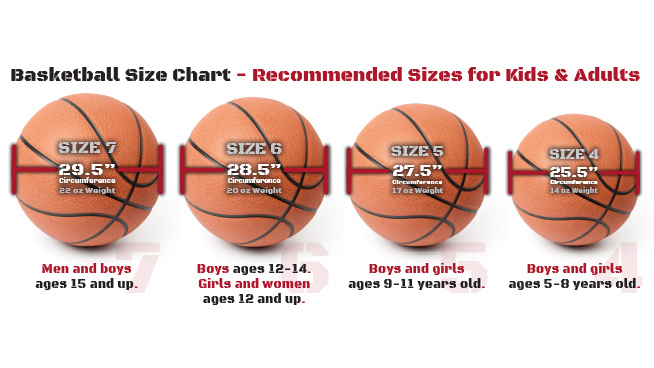 Here are the rules of basketball.
Here are the rules of basketball.
One of the most popular sporting disciplines in the world, basketball made its first appearance at the Olympics as a demonstration sport at the 1904 St Louis Games.
At the 1936 Games, basketball was included as a medal event and has been a permanent fixture at the quadrennial sporting showpiece since. Women’s basketball made its Olympic debut in 1976.
For people unfamiliar with the sport, here are the modern-day basketball rules, the regulations, scoring system, positions, and the origin of the sport.
Basketball has been a regular fixture at the Olympics since 1936.
Who invented basketball?
The origin of basketball can be traced to Springfield, Massachusetts in the USA. Dr James Naismith, a Canadian physical instructor working at the YMCA International Training School in Springfield, introduced basketball in 1891.
Instructed to devise an indoor sport to keep the YMCA athletes in shape during the harsh winter months, Naismith came up with a sport involving two peach baskets and a soccer ball with a set of 13 rules.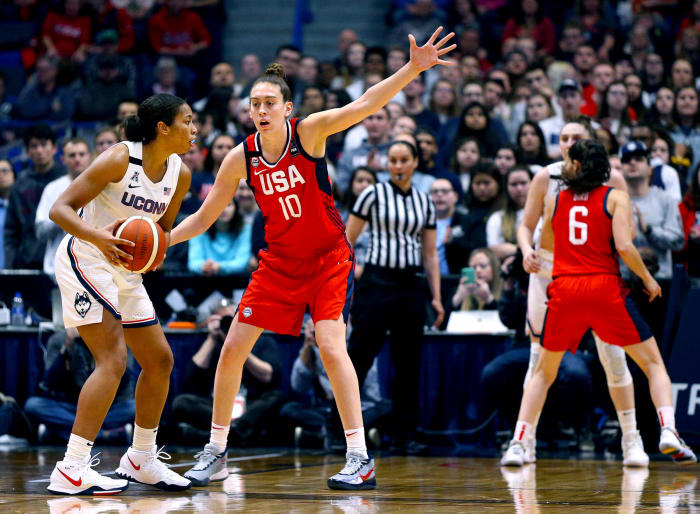
The first game of basketball was a 9 vs 9 contest according to Naismith’s rule book but over the years, the laws have been changed and fine-tuned to make what we know as modern-day basketball.
Basketball court: Dimensions and markings
To understand basketball, it’s important to have an idea of the court’s layout.
According to FIBA (international basketball federation) guidelines, a basketball court is a rectangular playing area 28m in length and 15m in width. International competitions including the Olympics follow FIBA guidelines.
The border markings along the length of the court are called sidelines and the breadth of the court are called endlines or baselines.
The key in the basketball court is a rectangular painted area inside the three-point arc.
The outer edge of the key parallel to the endline is called the free-throw line. There’s a 3.6m diameter semi-circle drawn on the outer part of the free-throw line called the free-throw circle.
Basketball rules and sport's regulations
Basketball is a team sport and the game is played between two sides. The core objective in a basketball game is to score points by putting the ball inside the hoop (basket) and to prevent the opposing team from doing the same.
A basketball game starts at the centre of the court when the ball is thrown high up by the referee and one player from each team competing to gain possession. The team that catches the ball, or in possession, is called the offensive team while the team not on the ball is the defensive team.
The offensive team plays with the intent of getting the ball through the opposition hoop or scoring a field goal after moving the ball around the court by passing or dribbling the ball, abiding by a fixed set of basketball rules.
Basketball points-scoring system
Three-point shot: Shooting and scoring a field goal from anywhere outside the three-point line arc wins the team three points.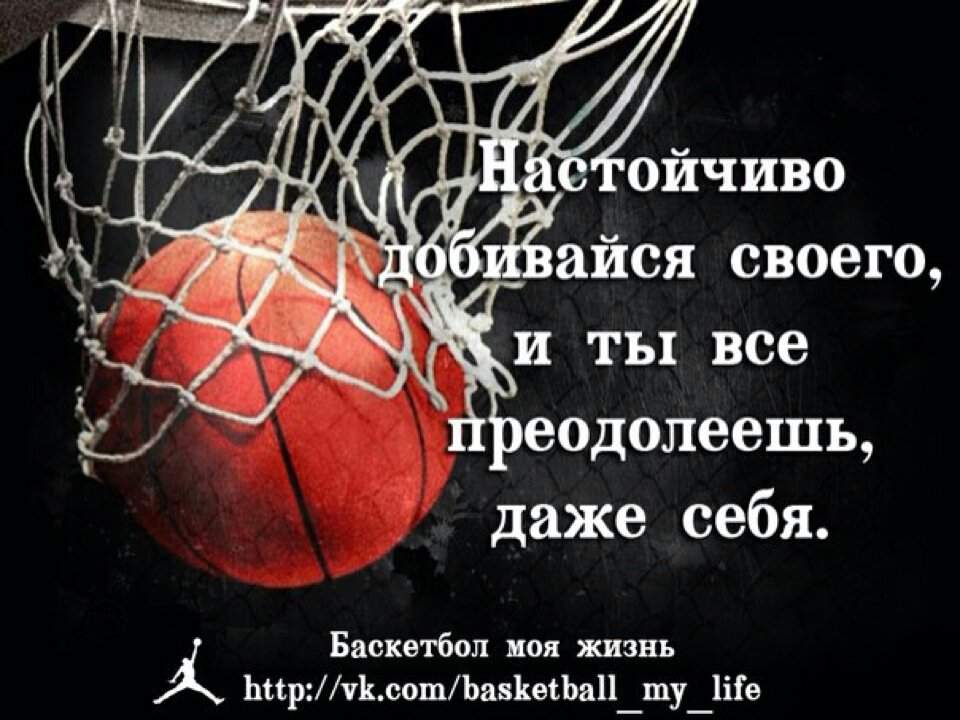 These are referred to as three-pointers.
These are referred to as three-pointers.
Two-point shot: A field goal which is scored from inside the area encircled by the three-point arc in the opposition half is worth two points. These are called two-pointers.
One-point shot: Points can also be accumulated through free-throws, which are worth a point each. Free throws are awarded to a team when the opposition team fouls.
During free throw, the fouled player is allowed a fixed number of shots -- depending on the nature and referee’s interpretation of the foul committed -- at an open basket from anywhere inside the free-throw circle with both his feet behind the free-throw line.
Illegal physical contact or obstructions without the intention of winning the ball by a defender when an offensive player is aiming to shoot is regarded as a foul.
A FIBA sanctioned game typically consists of four quarters of 10 minutes each. After two quarters or half-time, the teams switch sides on the court.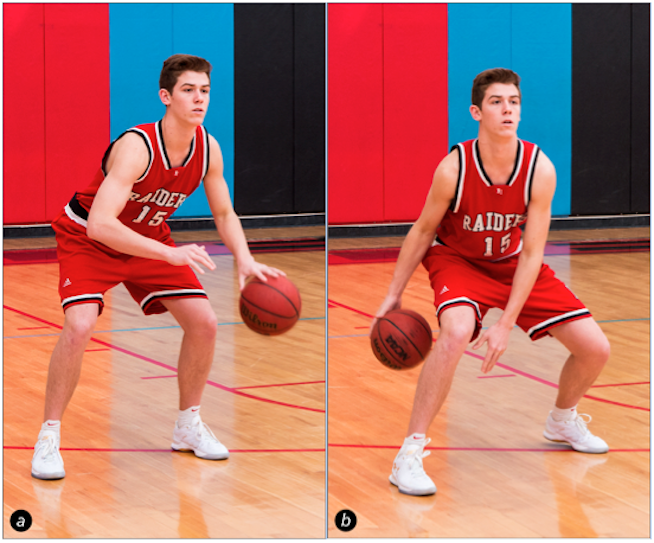 The team with more points at the end of the four quarters wins the match. If the score is tied at the end of regulation time, the game can go into an overtime period.
The team with more points at the end of the four quarters wins the match. If the score is tied at the end of regulation time, the game can go into an overtime period.
Basketball violations
An offensive player can keep the basketball moving around the court by dribbling or passing the ball to a teammate. In a basketball dribble, a player needs to bounce the ball against the floor continuously using one hand at a time.
Using both hands simultaneously to dribble or touching the ball twice before it bounces once constitutes a double dribble violation, which ends in ceding possession to the opponent team.
Furthermore, if a player stops a dribble completely, they need to pass or shoot the ball. In case they start dribbling the ball again after stopping, it is also considered a double dribble violation.
While receiving a ball on the move, a player is allowed to take a maximum of two steps before passing, shooting or starting a dribble.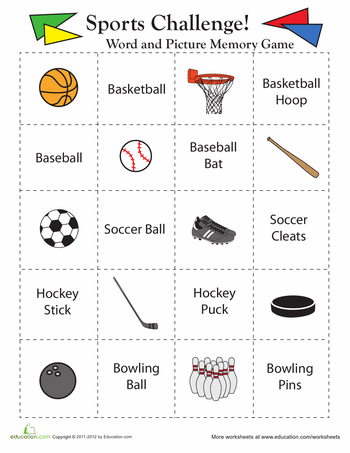 Basically, a player is not allowed to run with the ball. Otherwise, they are called for traveling violation, which again results in turning over possession.
Basically, a player is not allowed to run with the ball. Otherwise, they are called for traveling violation, which again results in turning over possession.
If in a stationary position while receiving a ball or after stopping a dribble, a player also needs to establish a pivot foot, on which they need to stay planted in the same spot while swerving or turning until a pass or shot is made.
Players receiving the ball can start a dribble but can’t lift or displace the pivot foot until the ball leaves his hands. Failure to comply results in a traveling violation.
When a team gains possession inside its own half, the players get 10 seconds to move into the opposition half. Once a team crosses into the midline, possession needs to be maintained in the defending team’s half and offensive players cannot go back to their own half. If the ball is passed back, it results in backcourt violation.
A defensive player is also not allowed to block or touch the ball when in a downward trajectory towards the basket. This is called goaltending violation.
This is called goaltending violation.
During an attack, an offensive player isn’t allowed to stay in the opposition key for over three seconds without attempting a shot. It is called the three-second rule and results in lane violation.
Shot Clock
Once a team gains possession of the ball, they are put on a 24-second Shot Clock, which means they have to throw the ball at the hoop or attempt a valid field goal before time runs out.
Failure to do so again results in the possession being turned over to the opposition team.
A Shot Clock stopwatch is typically displayed behind the basket during a basketball game.
How many players in a basketball team
A traditional basketball team has 12 players, with five basketball players on the court at any given time. Unlimited substitutions are allowed.
The five players can be segregated into the following positions:
Point guard: Usually players with the best ball-handling skills and vision in the team play as point guards. A point guard’s primary role is to orchestrate both offensive and defensive plays and set up scoring opportunities for team-mates.
A point guard’s primary role is to orchestrate both offensive and defensive plays and set up scoring opportunities for team-mates.
Shooting guard: Typically the best long-range and mid-range shooter in the team. Players patrolling the position constantly look for three-pointers or can help drag defenders out wide to create space near the basket for their team-mates.
Basketball legend Michael Jordan typically played as a shooting guard
Small forward: Playing as a short forward needs a versatile skill set. It requires strength and height as well as speed and dribbling abilities. Mid-range and short-range shooting abilities are also important.
Power forward: A power forward is somewhat similar to a small forward but with a bigger focus on physicality. A power forward is usually a foil for the center and are the team’s most dependable scorers from inside the paint.
Center: Usually the tallest player in the team, a center is required to occupy the space nearest to the basket in both halves. In defence, they are tasked to pick rebounds and block opposition shooters while their offensive duties require them to finish off short-range moves or shield out defenders to allow their team-mates a clean drive at the basket.
In defence, they are tasked to pick rebounds and block opposition shooters while their offensive duties require them to finish off short-range moves or shield out defenders to allow their team-mates a clean drive at the basket.
NBA, the popular US-based basketball league, also follows similar rules with very minor alterations.
Add this to your favouritesBasketball
More from
You May Like
Rules of Basketball
How the rules have changed in your favorite game
How the rules have changed in your favorite game
WE ALL LOVE TO PLAY BASKETBALL, BUT DO YOU KNOW THE RULES EXACTLY?
Basketball was invented by James Naismith in 1891. Then everything was different: playgrounds, baskets, balls…
!!! Read about the evolution of balls in the article:
Basketball was invented by James Naismith in 1891. Then everything was different: playgrounds, baskets, balls…
!!! Read about the evolution of balls in the article:
The history of basketballs
The history of basketballs
What balls are played now and how it happened
The beginning
The rules have also changed a lot during this time.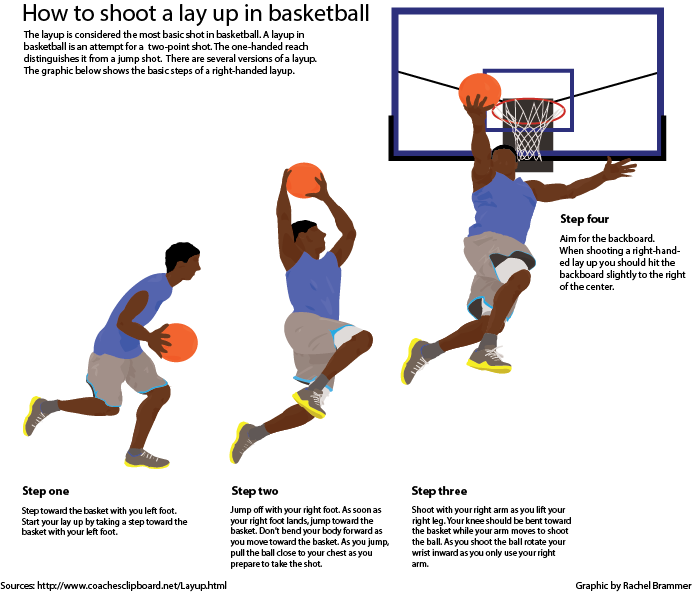 Initially, there were only 13 of them in basketball:
Initially, there were only 13 of them in basketball:
- The ball can be thrown in any direction with one or two hands.
- The ball may be hit with one or both hands in any direction, but never with the fist.
- The player cannot run with the ball. The player must throw the ball from the point at which he caught it, except for a player running at high speed.
- The ball must be held with the hands. You can not use the forearms and body to hold the ball.
- In any case, hitting, grabbing, holding and pushing the opponent is not allowed. The first violation of this rule by any player shall be called a foul; the second foul disqualifies him until the next ball is scored, and if there was an obvious intention to injure the player, then a disqualification for the whole game. It is not allowed to replace a disqualified player.
- Punching the ball is a violation of points 2 and 4, the penalty is described in point 5.
- commit no foul).
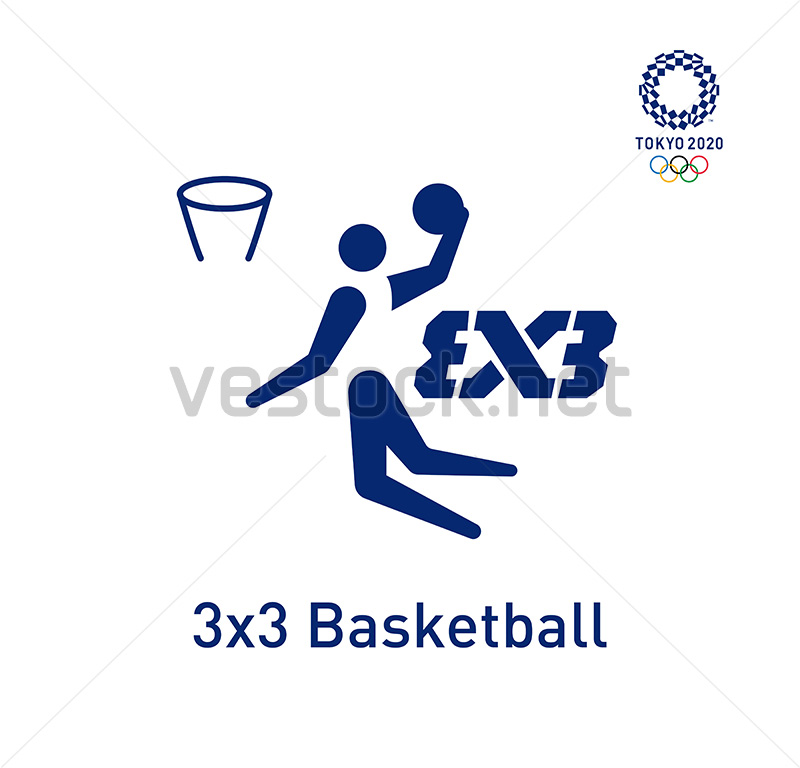
- A point is scored if a ball thrown or bouncing off the floor hits the basket and stays there. Defending players are not allowed to touch the ball or basket while shooting. If the ball touches the edge and the opponents move the basket, then a point is scored.
- If the ball goes out of bounds, it must be dropped into the field by the first player to touch it. In the event of a dispute, the referee must throw the ball into the field. The thrower is allowed to hold the ball for five seconds. If he holds it longer, then the ball is given to the opponent. If either side tries to play for time, the referee must give them a foul.
- The referee must monitor the actions of the players and fouls, and notify the referee of three consecutive fouls. He shall have the power to disqualify players under rule 5.
- The referee must watch the ball and determine when the ball is in play (inbounds) and when it goes out of bounds (out of bounds), which side should be in possession of the ball, and any other action that the referee would normally take .

- The game consists of two halves of 15 minutes each with a break of 5 minutes between them.
- The side with the most goals during this time period is the winner.
The most important rule change in the history of basketball is the introduction of dribbling. In the original version of the game, this was prohibited by paragraph 3 of the rules.
One of the first changes in the game and the rules was the replacement of the basket with a ring with a net. It seemed to be very inconvenient to climb after the ball every time after a hit. Around the same time, free throws, dribbling appeared, and the composition of the teams was fixed for 5 players on the court at the same time. Before that, in some matches, up to 50 people could be on the court at the same time. All this happened back in 1896-1897.
The emergence of FIBA (International Basketball Federation)
Basketball in the early 20th century became more popular and the rules in each country could be different.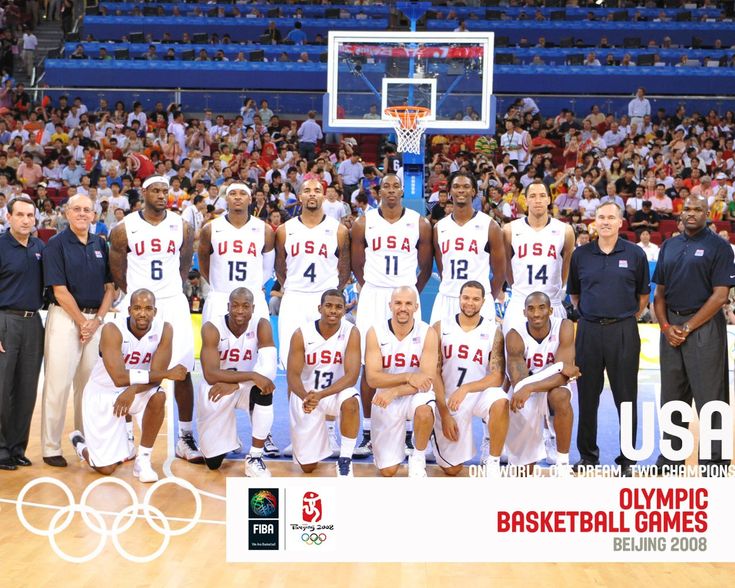 This was one of the reasons why FIBA appeared in 1932 year. At the first FIBA Congress, the teams were approved (5 people and 2 substitutes), and it was decided that after each goal there would be a throw-in in the center. This rule was removed after 4 years to reduce the advantage of tall players.
This was one of the reasons why FIBA appeared in 1932 year. At the first FIBA Congress, the teams were approved (5 people and 2 substitutes), and it was decided that after each goal there would be a throw-in in the center. This rule was removed after 4 years to reduce the advantage of tall players.
Over the next few years, the main changes were related to the number of personal fouls, the number of players on the bench and the introduction of a time limit for getting the ball into the opponent's half of the court.
More changes came in 1952 after the Olympic Games. The game became very boring, because the teams held the ball, having received a minimal lead in the score. Everyone understood this and searched for solutions for several years in order to save the life of basketball. At 1954 Danny Biason proposed to the NBA to limit the time for the shot to 24 seconds. At the 1956 Olympics, there was a similar rule: it was necessary to make a throw in 30 seconds. At the same time, to add equality between defense and attack, another rule familiar to us appeared: you need to start dribbling the ball before the supporting leg comes off.
Then the game became similar to the modern one from a technical point of view: dribbling, shots, a three-second zone appeared. In 1979, the NBA added a three-point line, and in 19In 1984, FIBA also added an arc.
!!! An article about the evolution of the three-point shot and interesting facts:
10 interesting facts about the three-point shot.
10 interesting facts about the three-point shot.
Three-pointer evolution and insane records.
Changes in the rules and basketball since 1956 have included the number of free kicks, the situations in which these free kicks are given, and individual and team penalties. Some rules were introduced, and a few years later they were canceled. For example, the "3 for 2" rule: if a player was fouled in the shooting phase, then if one of the first two shots was missed, he could make another free throw. This rule was later removed.
Since the 1990s there have been constant changes: the emergence of alley-oops, changes in the timing and rewriting of the rules of running, which continue to this day.
From the most interesting: if the team has 0.3 seconds or less to throw the ball from behind, then it must be a one-touch throw. It takes at least 0.4 seconds to perform a full throw.
Derrick Fisher made similar throws:
And here is a small selection of videos of how they throw in 0.2 seconds:
Do you want to take your first steps in basketball or improve your basic skills? We have a Basic Basketball Skills workout for you. See the schedule and sign up:
SIGN UP
Coach: Yuriy Bespalov
- Professional player of the INANOMO 3x3 team;
- Champion of Russia 3x3 2019, 2021;
- Winner and medalist of the MOFB championship;
- MLBL Summer League MVP 2017;
- Multiple participant of Moscow Open;
- Champion of Moscow 3x3 2017;
- MVP GrunisCup 2017.
IF YOU LIKE THIS ARTICLE, DON'T FORGET TO SHARE IT WITH YOUR FRIENDS.
MORE ARTICLES FROM
BLOG
We write useful articles about basketball training, basketball shoes and everything related to this beautiful game.
Basketball in Moscow in winter
Free throw in basketball: technique and secrets of execution
Passes in basketball: basic types and technique of execution
Basketball terms everyone should know
How to increase the jump? 5 tips
9 definitions every basketball player should know
#THIS YOUR GROUND
on social media:
Ghetto Olympic champions. The history of Latvian streetball
For the first time in history, the so-called street basketball, or streetball, is included in the program of the Olympic Games in Tokyo, which is played by three players against three - with one basket. The winner, beating the Russian Olympic Committee team in the final, was the Latvian team. These are very unusual Olympic champions - and not only because they became the first holders of this title in their sport.
"The Latvian men's 3x3 basketball team appeared out of nowhere," they wrote about them on the official website of the Olympics at the beginning of the competition.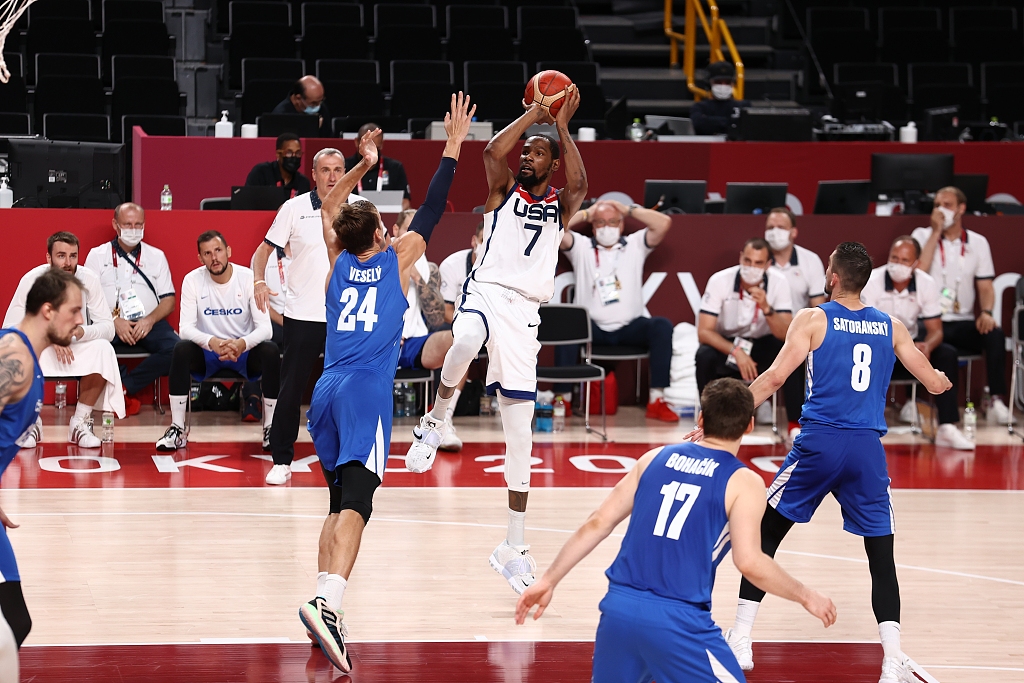 "It was a motley company, whose members were not in demand in the Latvian National League until a few years ago."
"It was a motley company, whose members were not in demand in the Latvian National League until a few years ago."
See also
Tokyo 2020 Summer Olympics open
Agnis Chavars, Edgars Krumins, Karlis Lasmanis and Nauris Miezis were greeted in their homeland as national heroes. They are folk: the victory of Riga Ghetto literally came from the street. It was under this name that the Latvian "dream team" gathered in 2017 and won the title of European champion. Since 2018, she has received the support of the Latvian Olympic Committee. These are state scholarships for athletes, the best conditions for training in Latvia, rehabilitation and sports medicine. In 2018, the team became vice-champion of Europe, and in 2019-m and the world. But until recently, the current leaders in the ratings of the International Basketball Federation (FIBA) in the 3x3 format were forced to earn extra money on the side.
Nauris Miezis grew up in a family of deaf parents.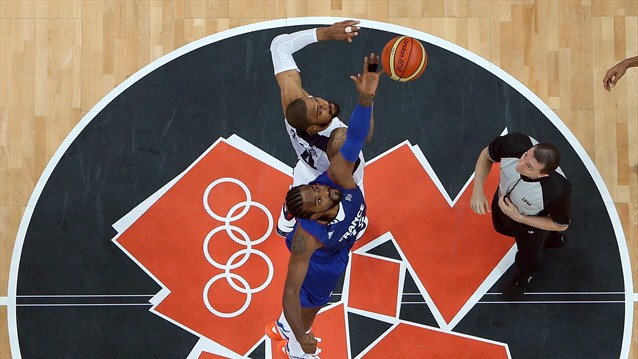 "We communicated in sign language," he told the newspaper Latvijas avīze, "it was my first language. I had a very difficult childhood, I spent many years with a speech therapist to learn how to speak." Once Miezis entered the youth basketball team in the 5x5 format at the European Championships, but he was not invited again, and then the Latvian Basketball Association completely disqualified him. Agnis Chavars, who won titles in Germany, Sweden and Latvia in 5x5 format, is a programmer in everyday life. The youngest member of the team, Karlis Lasmanis , also started his career in big basketball, but did not fit in and even thought of quitting his career, having worked for almost a year in the port of Ventspils on a tugboat.
"We communicated in sign language," he told the newspaper Latvijas avīze, "it was my first language. I had a very difficult childhood, I spent many years with a speech therapist to learn how to speak." Once Miezis entered the youth basketball team in the 5x5 format at the European Championships, but he was not invited again, and then the Latvian Basketball Association completely disqualified him. Agnis Chavars, who won titles in Germany, Sweden and Latvia in 5x5 format, is a programmer in everyday life. The youngest member of the team, Karlis Lasmanis , also started his career in big basketball, but did not fit in and even thought of quitting his career, having worked for almost a year in the port of Ventspils on a tugboat.
Edgar Krumins
"My sports career began at the age of six in classic 5x5 basketball," Edgars Krumins tells Radio Liberty . "I studied at the Jelgava Sports School, earned basketball from the age of 17, played in clubs in Latvia and Estonia.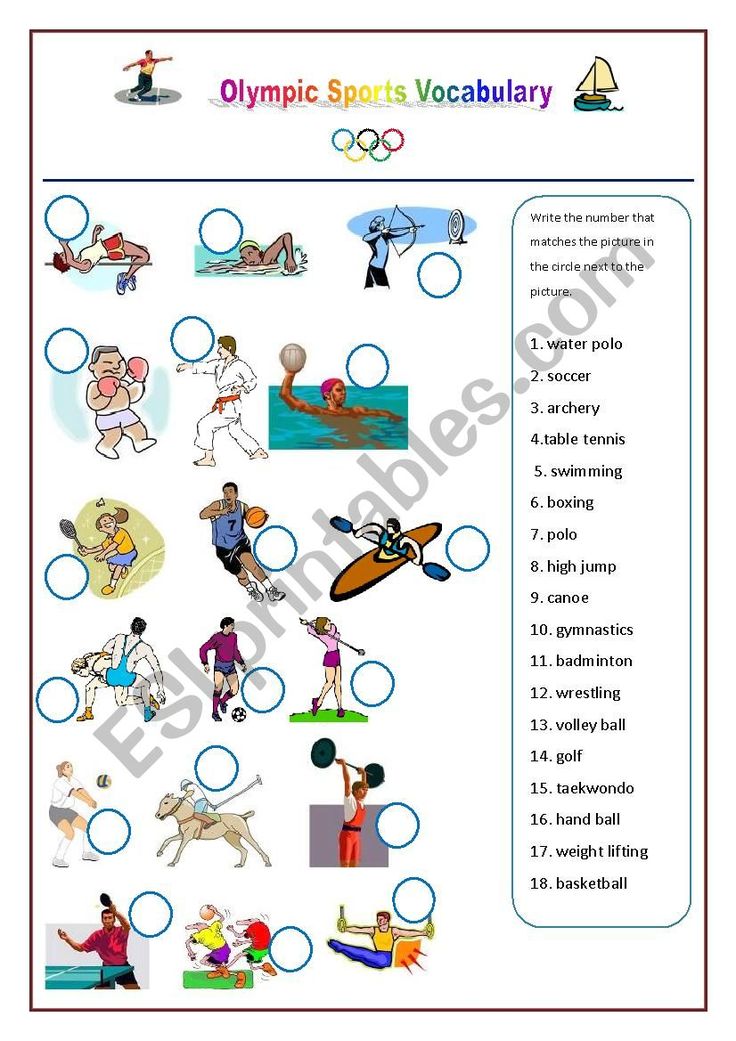 " Krumins is the oldest in the team, he is 35 years old. A few years ago, he retired from professional sports, which he now speaks with reluctance. The story of street basketball, however, is not over. "Before we got the title of European champions, I played at the Ghetto Basket tournaments. We were acquainted with their founder Raymond Elbakyan. When he started holding them, we phoned, came, we liked it, and since then we have played every summer." Edgars Krumins believes that teamwork helped the athletes win gold at the Tokyo Olympics: "We have strong chemistry in the team, we are one big family: one for all and all for one."
" Krumins is the oldest in the team, he is 35 years old. A few years ago, he retired from professional sports, which he now speaks with reluctance. The story of street basketball, however, is not over. "Before we got the title of European champions, I played at the Ghetto Basket tournaments. We were acquainted with their founder Raymond Elbakyan. When he started holding them, we phoned, came, we liked it, and since then we have played every summer." Edgars Krumins believes that teamwork helped the athletes win gold at the Tokyo Olympics: "We have strong chemistry in the team, we are one big family: one for all and all for one."
We have a strong "chemistry" in the team, we are one big family
The ground that raised such a team was the street basketball stadium, founded in Riga's Grizinkalns park by the leader of the street basketball movement Ghetto Games Raimonds Elbakyan .
"Gold medals are, of course, a huge compliment for us," Elbakyan tells Radio Liberty./cdn.vox-cdn.com/uploads/chorus_image/image/69666606/1234398364.0.jpg) "The whole of Europe has known for ten years that Latvia has the wildest tournaments." Today, the movement includes street football, the most massive sport, which, according to Elbakyan, "is now pulling the whole story," as well as airsoft, floorball, martial arts, BMX, hip-hop. Tournaments, festivals and rap battles are held.
"The whole of Europe has known for ten years that Latvia has the wildest tournaments." Today, the movement includes street football, the most massive sport, which, according to Elbakyan, "is now pulling the whole story," as well as airsoft, floorball, martial arts, BMX, hip-hop. Tournaments, festivals and rap battles are held.
Raymond Elbakyan
Elbakyan used to play together with Chavars for the youth team of Latvia in the classical format, but his sports career did not work out. “I wanted to stay in basketball, but not as an athlete,” he describes the origins of the movement. “By the beginning of the 2008 crisis, I had a small construction company. The business brought a very good income, but it all ended overnight. In January 2009, protesters in Old Riga they smashed shop windows and overturned police cars, and I was sitting at the TV, an unemployed father of two children, and I thought about what I was ready to do in sports without money. It is in business that you cannot help but earn.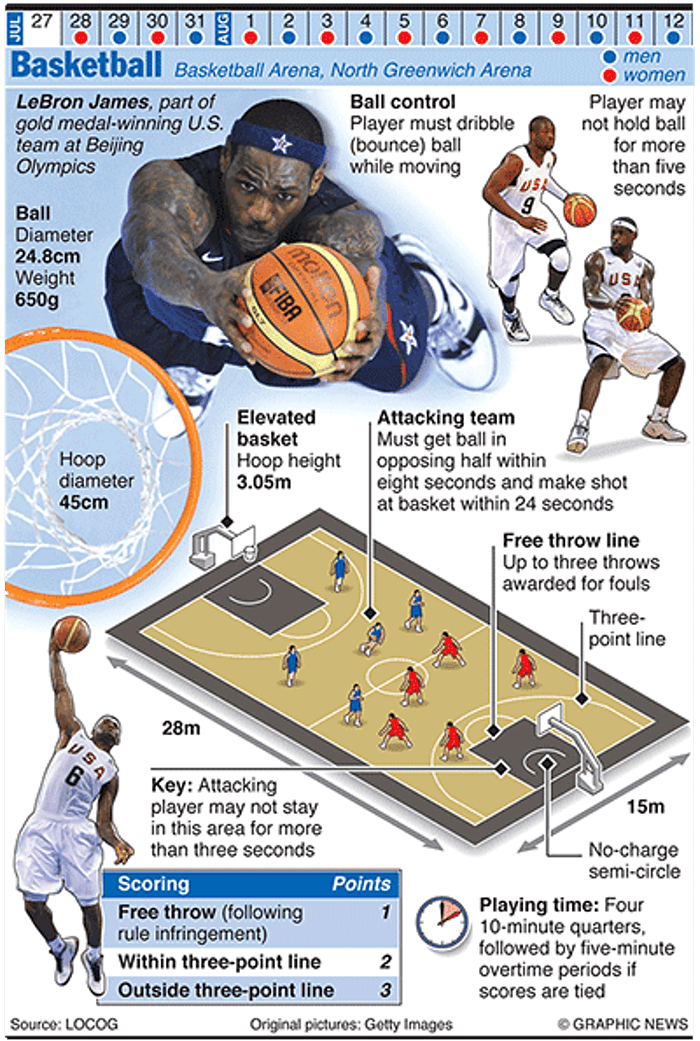 But in educational work, in the social sports movement - quite " .
But in educational work, in the social sports movement - quite " .
The "Street Sports Lab", as the Ghetto Games project is now called, started with six baskets next to the skate park. Athletes of "big" basketball began to come there in their free time to play. "The Ghetto format is not about super-professional sports, but more about hanging out," Raymond explains.
Previously, there was a "dot" on the "dot": drugs, illegal alcohol, prostitution. Once a month someone was raped
"In American cities, there are disadvantaged areas - ghettos," says Elbakyan's associate, designer of the Ghetto Games brand artist Vladislav Lakshe . “Our Grizinkalns is just like that.” The area was a leader in crime statistics. “Before, there was a dot on a dot: drugs, illegal alcohol, prostitution,” recalls Elbakyan. “Once a month someone was raped. Some people came to me and asked, "Who are you?" I said, "Now we will live here in a new way. " There were skirmishes. In my youth, I fought a lot, I was thrown out of all possible basketball schools for aggression. We could work there without security, because we were ready to solve any problems with our fists. We have a lifetime disqualification for an open kick to the leg. There were simply no such cases, everyone already knows this. But at first we still explained to the newcomers, and we ourselves sincerely believed that we would first beat the offender, and then he would not play in the tournament. "
" There were skirmishes. In my youth, I fought a lot, I was thrown out of all possible basketball schools for aggression. We could work there without security, because we were ready to solve any problems with our fists. We have a lifetime disqualification for an open kick to the leg. There were simply no such cases, everyone already knows this. But at first we still explained to the newcomers, and we ourselves sincerely believed that we would first beat the offender, and then he would not play in the tournament. "
“Some young people who gather there don’t have the opportunity to go to basketball or sports school,” says Vladislav Lakshe, “but here they can participate in tournaments and, if they win, go abroad. When I was a child, Adidas held there were streetball tournaments in Riga, and the most they gave us was jerseys and sneakers, but we were endlessly happy.Then Reebok organized a 3v3 tournament, in which the main prize was a trip to America for NBA matches, and we fought like crazy.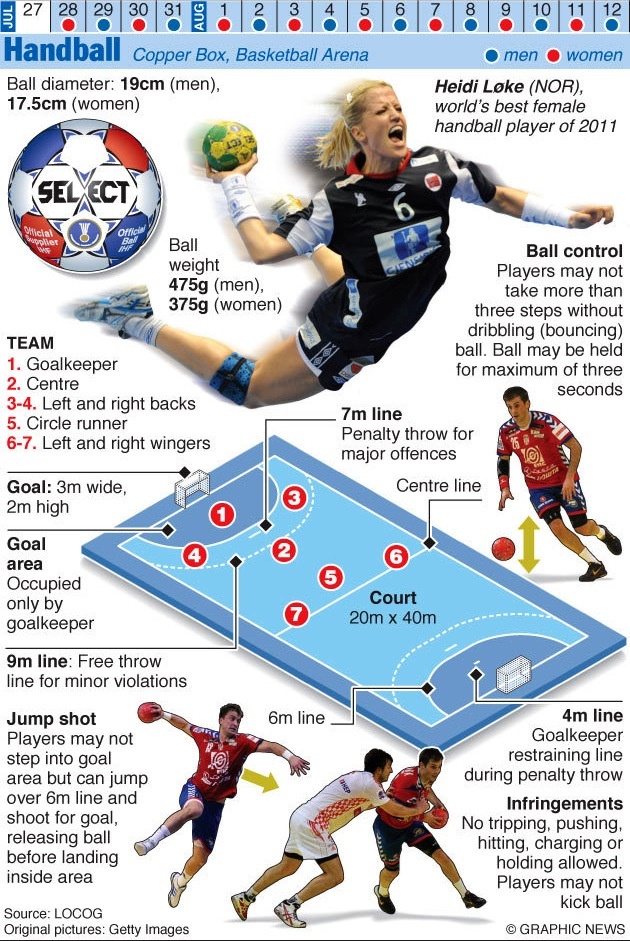 We Raimonds and I were thinking: how to motivate players to participate in the absence of budgets?I suggested: come on, I will draw our Latvian NBA player Andris Biedrins (he played for Golden State), and we will send him a picture with a sponsorship proposal.He turned out to be a good guy, supported took the initiative and sent winning teams to the USA for many years."
We Raimonds and I were thinking: how to motivate players to participate in the absence of budgets?I suggested: come on, I will draw our Latvian NBA player Andris Biedrins (he played for Golden State), and we will send him a picture with a sponsorship proposal.He turned out to be a good guy, supported took the initiative and sent winning teams to the USA for many years."
Players of the Latvian national streetball team celebrate victory in the final match of the Olympic tournament in Tokyo, July 28, 2021
“In order to buy the first plastic playground with funds from the Norwegian Foundation, we went to Amsterdam by minibus,” recalls Raymond Elbakyan. “In it, I slept on the floor, it was very cold, but I had no money for a hotel.”
In the fifth or sixth year, sponsors appeared who wanted to advertise on the site, which gathers thousands of young people from all over Latvia. In 2014, the movement peaked, with 80 to 100 teams playing in the men's group alone on some nights.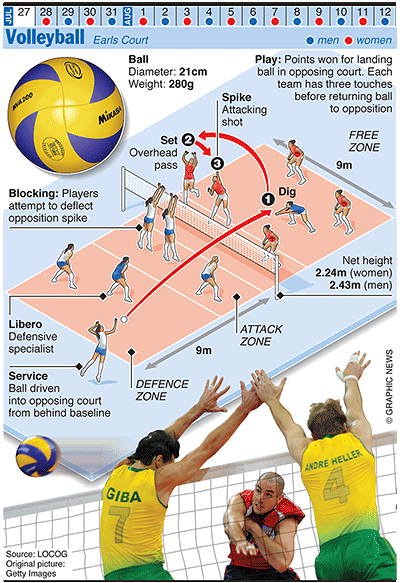 “There was no infrastructure anywhere, and people came to us just to play from all over the country,” Raymond says. “On this wave, [former Riga mayor Neil] Ushakov built playgrounds near almost every house. He liked our movement in general, he was with us emotionally, and by our fifth season, the Riga City Council began to support us financially as well. Its contribution to our budget was about 20%.
“There was no infrastructure anywhere, and people came to us just to play from all over the country,” Raymond says. “On this wave, [former Riga mayor Neil] Ushakov built playgrounds near almost every house. He liked our movement in general, he was with us emotionally, and by our fifth season, the Riga City Council began to support us financially as well. Its contribution to our budget was about 20%.
The mayor's office cleaned up the park and its surroundings, and the atmosphere changed. “Now this place is treated like a church: people know that we don’t smoke there, we don’t drink alcohol,” says Elbakyan. “They never stole from us, because stealing from athletes is not honorable. alcohol point. He plays football very well and I don't think he or his sister will ever do that kind of thing again."
See also
Olympics without a flag
Freedom reigns in street basketball: there are no referees or coaches. The Olympic four are perhaps the only 3x3 professionals in Latvia who are fed by sports.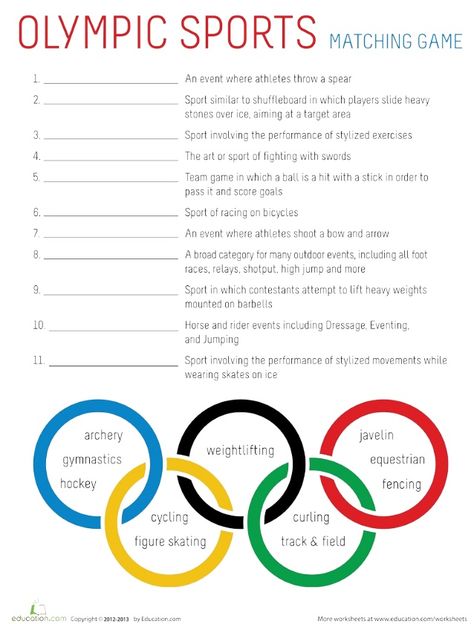 "Any job is welcome in the movement," says Raymond. Riga Ghetto made money on victories in international tournaments. According to Raymond Elbakyan, the total prize fund of the team for 2019 amounted to about 300 thousand euros. “In 2018, they realized that they needed a coach,” he recalls. “In this sport, the players themselves find it. And they began to come to training in the gym at six in the morning, because Chavars and the second team, their sparring partners, I had to go to work."
"Any job is welcome in the movement," says Raymond. Riga Ghetto made money on victories in international tournaments. According to Raymond Elbakyan, the total prize fund of the team for 2019 amounted to about 300 thousand euros. “In 2018, they realized that they needed a coach,” he recalls. “In this sport, the players themselves find it. And they began to come to training in the gym at six in the morning, because Chavars and the second team, their sparring partners, I had to go to work."
Much of Ghetto Games' success comes from a strong, inspiring brand. Vladislav Lakshe recalls: "Raymond came to my gallery and offered to participate in the project. I went into it with my head, for a long time I did not take money for work so that I could print banners, produce T-shirts and distribute them around the city, infect fans with campaigning. I myself played basketball, graduated from the VEF basketball school, played on the street, and it is not clear what was more important for me - art or basketball.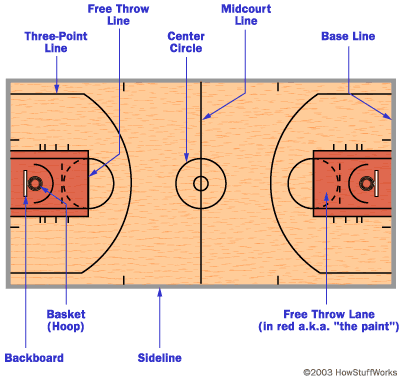 Vladislav's master's work at the Academy of Arts was devoted to a propaganda poster, and Ghetto served as a platform for experiments. He dreamed of playing in the NBA, but ended up making it into the league as an artist in 2016, signing a visual contract with Canada's Toronto Raptor.
Vladislav's master's work at the Academy of Arts was devoted to a propaganda poster, and Ghetto served as a platform for experiments. He dreamed of playing in the NBA, but ended up making it into the league as an artist in 2016, signing a visual contract with Canada's Toronto Raptor.
“The ghetto was combed, sprinkled with foam, but it hasn’t gone away, and I try to keep this glow in my work,” Laksha explains the brand’s ideology. “Win, fight, conquer yourself, never give up – all my works and slogans are about this. The guys who got gold grew up on it.The slogan of my last work that I did for the national team is “Five rings, four champions.” Thanks to the Olympic Committee for making 3x3 an Olympic sport, otherwise they would have played on street".
Win, fight, conquer yourself, never give up. The guys who got gold grew on this
"We wanted to make a brand for the 'bad guys,'" Elbakyan agrees. will turn to young aggressive guys so that they come to us, become as kind as the leaders of our movement.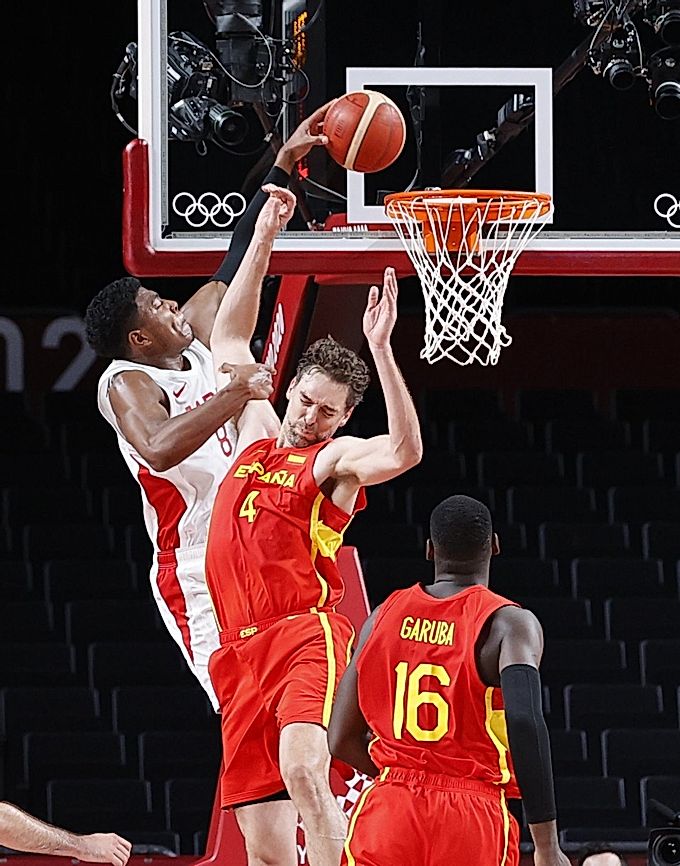 "
"
Raymond Elbakyan has a difficult relationship with the Latvian Basketball Association. In an interview in 2019, he mentioned that the LBA is refusing financial support for Ghetto Games, as it considers it a commercial project. “I fought enough for the athletes,” Elbakyan tells Radio Liberty. “When Miezis was disqualified, he came to us. The association turned to me to ban him from playing. "He did. He won, he liked it, and I categorically told them that they would not contact me with such requests in the future. He spent these two years in amateur private leagues and in 3x3 basketball, that is, in Ghetto."
See also
Olympic Anxiety. Sergei Medvedev on serf sports
Ghetto Games is a public organization, but works on the principle of an agency: it organizes events, attracting various financial sources. The season runs from May 13 to the end of August and includes more than 60 events. “This is not a commercial project, but rather a huge social experiment that annually generates a turnover of more than a million euros,” says Elbakyan.